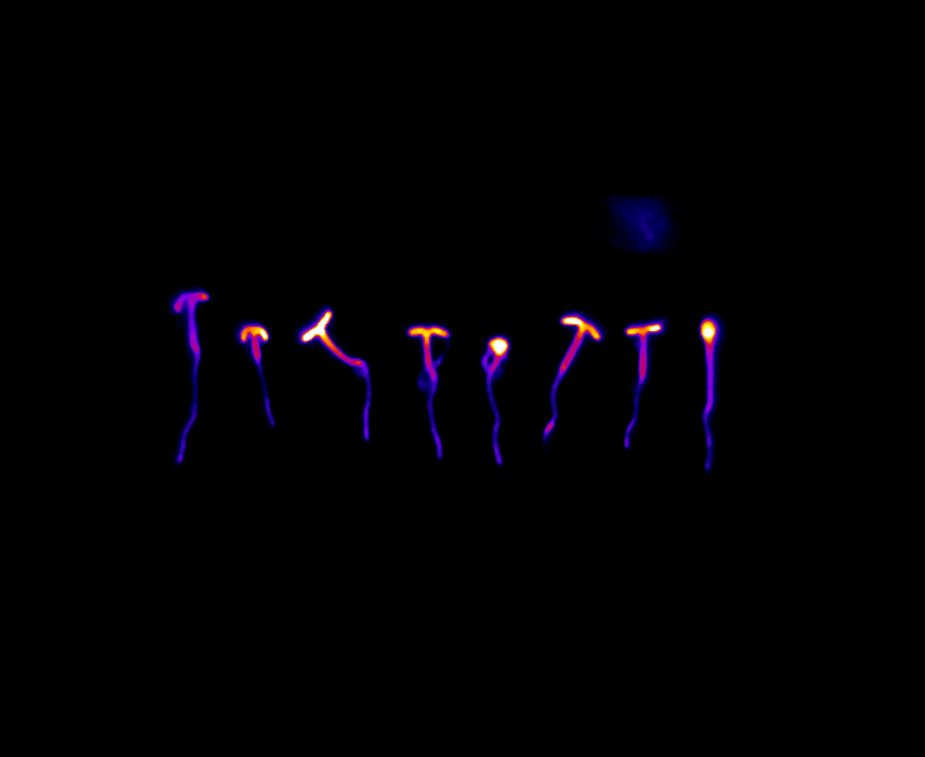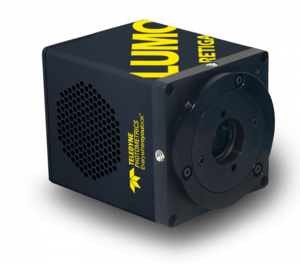Gene Expression via Bioluminescent Reporters
Dr. James Locke, Mr Mark Greenwood
The Locke Group Laboratory, University of Cambridge, UK
Background
The research performed by the Locke Group at the University of Cambridge focuses on developing a quantitative understanding of gene circuit dynamics. One of the gene circuits of particular interest is the circadian clock, the biological timekeeper. In plants the clock is highly important; the clock controls anticipation of day/night as well as responses to faster environmental changes.
The research team has found it is critical to observe the circadian clock at both the tissue level and single-cell level as traditional approaches that take an average from a population can obscure heterogeneous responses and novel dynamics.

Figure 1: Expression of GI:LUC, a transcriptional reporter for the circadian clock, in single Arabidopsis
seedlings. The image was taken using the Retiga LUMO with a 20 minute exposure and 4×4 binning.
Challenge
Previously the team used luminescent reporter genes and EMCCD or back-thinned CCD cameras to monitor gene expression of the clock tissue specifically over several days. Although long exposure imaging with these cameras provides good signal sensitivity, often much of the spatial dynamic was lost to noise. The cost and physical size of the cameras also limited their throughput.
We chose the Retiga LUMO camera because of its impressive sensitivity and low dark current which means we can achieve a high signal while minimizing noise, which is the key to long exposure imaging.
Dr. James Locke, Mark Greenwood
Solution
In an effort to better support their imaging needs, the team
purchased four Retiga LUMO™ CCD cameras from Teledyne Photometrics. Mr. Greenwood (Ph.D. student) shares,"We chose the Retiga LUMO camera because of its impressive sensitivity and low dark current which means we can achieve a high signal while minimizing noise, which is the key to long exposure imaging."
Greenwood continues,"The low cost and physical size of the Retiga LUMO in comparison to other cameras designed for long exposure imaging, as well as the simple API, meant that we could increase our throughput considerably."

Learn More About The Retiga LUMO